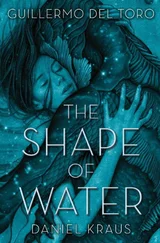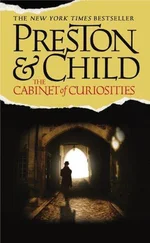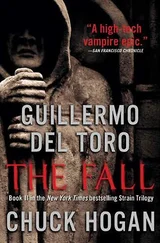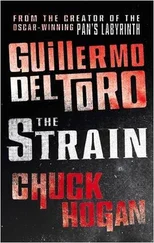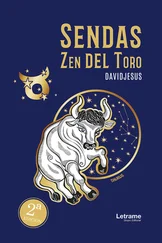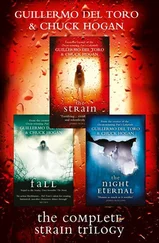MSZ:Next to it are some Lovecraftian symbols, kind of like the ones you drew in the first Hellboy notebook. Except here they’re contained within a frame.
GDT:That is troll writing for the map shop. I think it’s one of my favorite sets, because it had every sort of paper—all sorts of maps and atlases—covered in troll writing.

Del Toro’s idea for the threshold giant was developed by Wayne Barlowe into a finished concept that informed the final computer-generated creation.
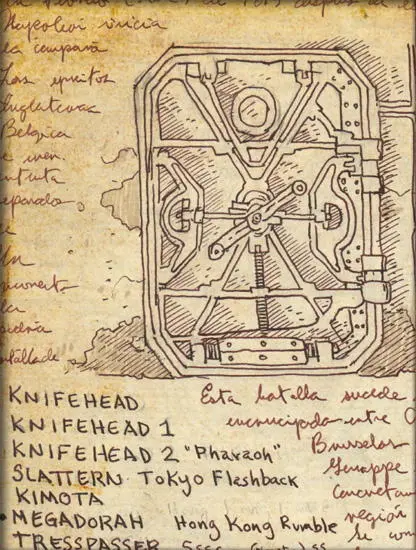
Sketch of a door to a Jaeger Conn-pod from del Toro’s fifth notebook.

Concept of Gipsy Danger, the heroic American Jaeger, by Oscar Chichoni.

Storyboard of the Kaiju Knifehead attacking Gipsy Danger by Rob McCallum.
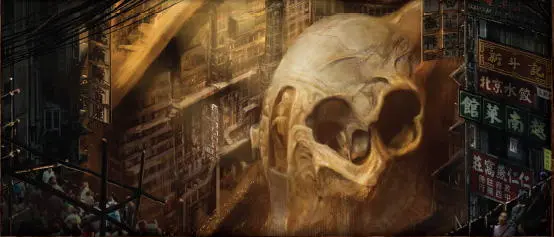
Concept of the Kaiju skull temple in Pacific Rim’s futuristic Hong Kong by Doug Williams.
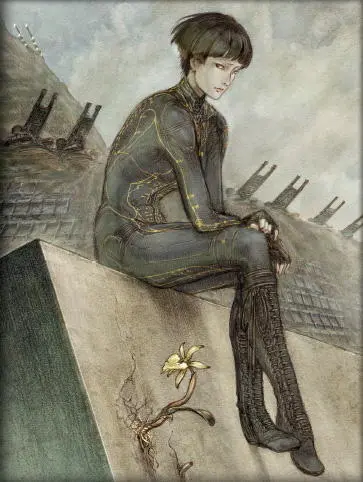
Concept of Mako Mori on the Shatterdome ramparts by Keith Thompson.
AS GUILLERMO GAINS GREATER FAME and scrutiny, and as security on the tentpole films he crafts becomes ever greater, the notebooks have become a two-edged sword. They are valued as works of art in themselves, but could also become liabilities by revealing great secrets if lost or stolen. In addition, these pages reflect not only the changing nature of Guillermo’s life and art, but also the changing relationship between him and his audience. He is no longer a fledgling unknown clamoring for attention but a celebrity operating in public view.
Even today, Guillermo is reluctant to acknowledge his widespread popularity and vast influence. “I’m still not on the world stage. There are people who care for me. Still, the large majority of people don’t know who I am. I’m not a household name; I’m an acquired taste.”
Genuine modesty aside, Guillermo has learned the need for ever-greater caution regarding the notebooks. He must constantly be mindful of them. He became sharply aware of this on The Hobbit (2012); he was originally scheduled to direct the film series, and on the first film he shares cowriting credit. “The problem with the notebooks is, there was a very fractured relationship with them during The Hobbit. I kept a lot of notes, but I was very paranoid of them being lost because that was a supersecret project. To this day I’m very paranoid about that book, which is not finished; I’m still writing in it. So I pull it out less often because if it gets lost, if I reveal anything that’s stayed in the movies, it’s legally very, very binding.”
Once Guillermo was on board as The Hobbit ’s director, financial difficulties with MGM led to the film’s delay. After two years cooling his heels in New Zealand waiting for production to begin, Guillermo ultimately left the project, intent on making up lost time and getting back to work.
Back in the United States, Guillermo met with James Cameron, who asked him if he was still interested in making a film of H. P. Lovecraft’s novel At the Mountains of Madness —because, if so, Cameron wanted to produce it.
Guillermo had been making notes—and notebook entries—on Mountains of Madness for more than fifteen years, and with Cameron fresh off the billion-dollar-plus success of Avatar , it seemed at last the stars would align to bring Guillermo’s most avidly desired project to fruition. Tom Cruise and Ron Perlman were cast in lead roles, and many months of intense preparation began, including astonishing creature designs, breathtaking production artwork, detailed storyboards of the entire film, location scouting, and more.
Then, at the last moment, the studio pulled the plug. No R-rated, two-hundred-million-dollar film had ever been greenlit to production, and the studio feared that the movie wouldn’t turn a profit without the child and teen audience. Heartbroken, Guillermo leapt into another film he’d been developing with Legendary Pictures, Pacific Rim —the ultimate giant monster-versus-giant robot movie.
“I think I’ve been preparing for Pacific Rim all my life,” Guillermo says. “When I was a kid, I saw The War of the Gargantuas in a shitty theater in Mexico, and I got a glass of pee thrown on my head from the balcony, and I stayed to finish the movie. That’s how much I love kaijus , you know?”
Pacific Rim was the perfect remedy for all the emotional and psychic wounds Guillermo had suffered while trying to make The Hobbit and At the Mountains of Madness —then emerging without a picture to shoot after four years. As he puts it, “Pacific Rim has been the best experience for me in producing and directing a movie that I’ve ever had.”
Best of all, this big summer movie embraces many of Guillermo’s favorite themes and motifs: the balancing act between the forces of chaos and order, darkness and light, human and mechanism entwined, duking it out with gigantic weird creatures from another dimension—much like H. P. Lovecraft’s Old Ones.
Filled with new creative fervor, Guillermo returned to working out designs and ideas in his notebooks. “Pacific Rim has a number of pages, which means a lot,” he relates. “If I have more than two pages on a movie, that means I’ve been at it for a long time because I don’t write that often in the book anymore.”
He hasn’t written in the notebook since completing Pacific Rim , but he adds, “Now that I’m doing [the TV version of] The Strain and Crimson Peak , I may restart. But I really want to finish this volume, so I can put it in a safe place, and I can start carrying a new notebook again. Once I’m not working on a supersecret project, I’ll be relaxed.”
What of the future? For a writer-director with such dark visions, Guillermo’s outlook is enduringly hopeful. Paraphrasing science fiction legend Theodore Sturgeon, one of his favorite writers, Guillermo observes, “There’s the famous Sturgeon’s Law, which is, ‘Ninety percent of everything is shit.’ Now the way I live my life is the del Toro Law, which is, ‘Ten percent of everything is awesome. ’ You know what I’m saying? I agree with Sturgeon, except I think that it’s amazing that we get ten percent.
“All I know is that hatred makes life so much shorter and bitter. And every time you can give love, give love, if you can—and you can’t all the time, I mean I’m not a candy-ass Teletubby, I’m a human being, you know. I hate people and I love people. But whenever you can, just fucking love. If you can choose, choose love.”

Kaiju concept by Guy Davis.
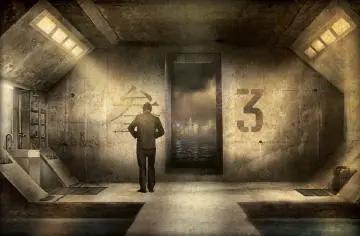
Concept of Stacker Pentecost in his office in the Shatterdome by Vicki Pui.

Film teaser poster art by Hugo Martin.
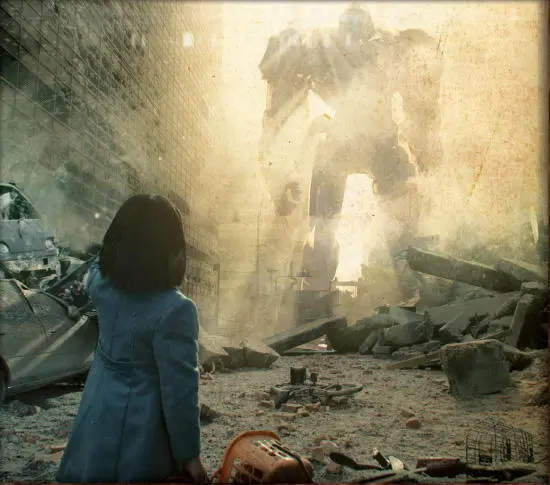
Mako Mori (Mana Ashida) is rescued by the Jaeger Coyote Tango.
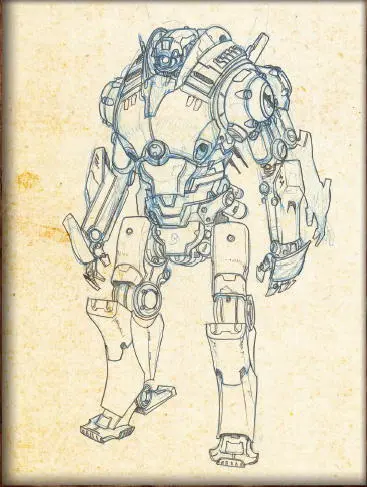
Sketch of the Chinese Jaeger Crimson Typhoon by Francisco Ruiz Velasco.
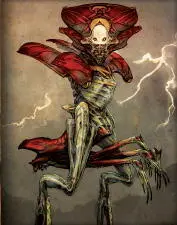
Concept of a Precursor by Keith Thompson.
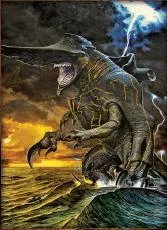
Concept of the Kaiju Knifehead by Wayne Barlowe.

Del Toro applying some more patina to the Alaskan wall set during shooting.
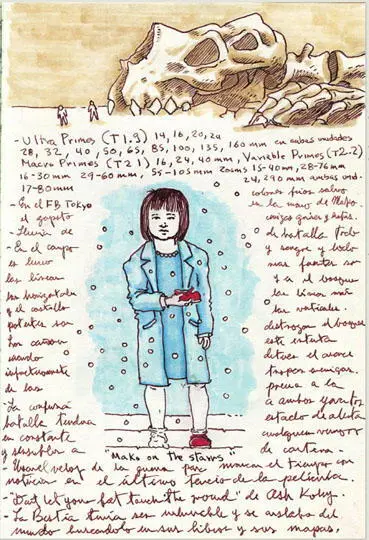
NOTEBOOK 5, PAGE 7
–Ultra Primes (T1.9) 14, 16, 20, 24, 28, 32, 40, 50, 65, 85, 100, 135, 160 mm for each unit Macro Primes (T21) 16, 24, 40 mm, VariablePrimes (T2.2) 16–30 mm 29–60 mm, 55–105 mm zooms 15–40 mm, 28–76 mm, 17–80 mm 24, 290 mm, each unit.
Читать дальше
















